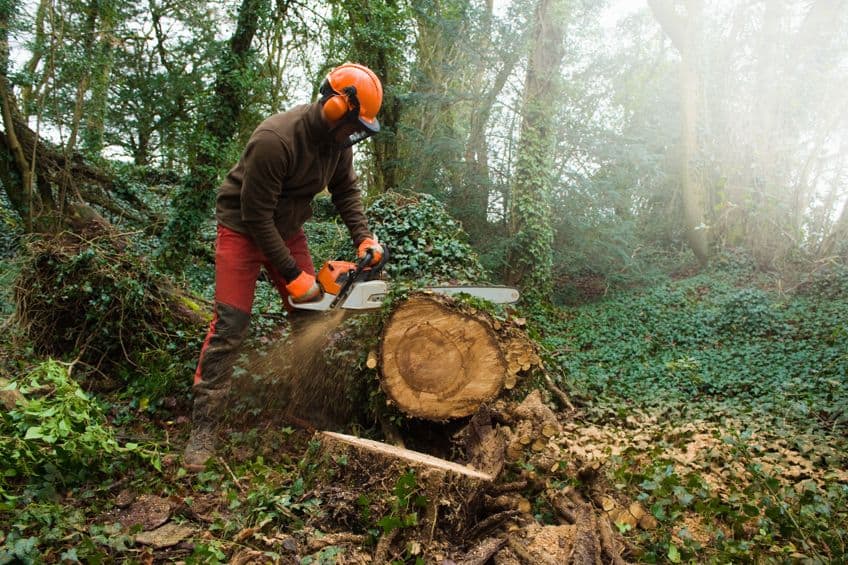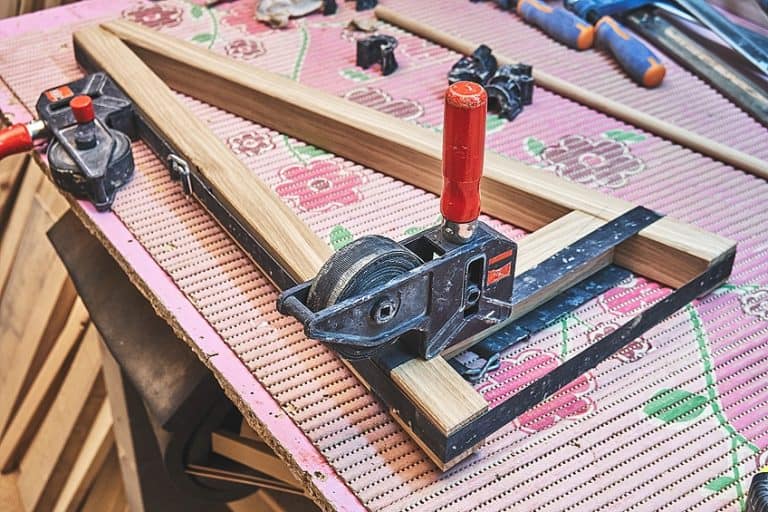How Much Does It Cost to Cut Down a Tree – Price Factors
Understanding the cost of tree removal is essential for property and land management. Prices vary widely based on the tree’s size, type, and condition, as well as accessibility and potential risks. Safety precautions and potential property damage prevention are crucial and add to the cost, which includes felling the tree, stump removal, and debris disposal. Labor and equipment also contribute to the final quote, with emergency situations potentially incurring additional charges.
Key Takeaways
- Costs to remove trees vary widely based on size, type, and location.
- Safety preparations and labor are significant factors in the pricing.
- Additional services like stump removal will affect the total cost.
Tree Removal Costs by State
Throughout the United States of America, the cost for cutting down trees can differ quite a lot, depending on various factors. These factors may be a higher hurricane-prone area, isolated locations, higher urban populations, and tree types and locations. We have summarized these facts in the table below.
Take a look and see the kind of price you can expect depending on where you live.
| State | Average Cost Range | Notes |
|---|---|---|
| Alabama | $200 – $2,000 | Varies by tree size and urban/rural location |
| Alaska | $500 – $3,000 | Higher due to accessibility and labor costs |
| Arizona | $300 – $2,500 | Influenced by tree type and location |
| Arkansas | $250 – $2,000 | |
| California | $600 – $3,000 | Higher in urban areas like Los Angeles and San Francisco |
| Colorado | $300 – $2,500 | Costs can vary significantly with tree size and location |
| Connecticut | $400 – $2,500 | Higher costs in densely populated areas |
| Delaware | $300 – $2,000 | |
| Florida | $250 – $2,500 | Costs influenced by hurricane cleanup demand |
| Georgia | $250 – $2,000 | |
| Hawaii | $500 – $2,500 | Higher costs due to island locations |
| Idaho | $250 – $2,000 | |
| Illinois | $300 – $2,500 | Chicago area may see higher rates |
| Indiana | $250 – $2,000 | |
| Iowa | $250 – $2,000 | |
| Kansas | $250 – $2,000 | |
| Kentucky | $250 – $2,000 | |
| Louisiana | $300 – $2,500 | Higher in hurricane-prone areas |
| Maine | $300 – $2,500 | |
| Maryland | $350 – $2,500 | Higher around Baltimore and D.C. suburbs |
| Massachusetts | $400 – $3,000 | Higher in Boston and densely populated areas |
| Michigan | $250 – $2,500 | |
| Minnesota | $300 – $2,500 | |
| Mississippi | $250 – $2,000 | |
| Missouri | $250 – $2,500 | |
| Montana | $300 – $2,500 | Higher due to large rural areas and access issues |
| Nebraska | $250 – $2,000 | |
| Nevada | $300 – $2,500 | Las Vegas area may see higher rates |
| New Hampshire | $300 – $2,500 | |
| New Jersey | $400 – $3,000 | Higher in densely populated areas |
| New Mexico | $300 – $2,500 | |
| New York | $500 – $4,000 | Higher in NYC and surrounding areas |
| North Carolina | $250 – $2,500 | |
| North Dakota | $250 – $2,500 | |
| Ohio | $250 – $2,500 | |
| Oklahoma | $250 – $2,000 | |
| Oregon | $300 – $2,500 | Higher in Portland and urban areas |
| Pennsylvania | $300 – $2,500 | Higher in Philadelphia and Pittsburgh |
| Rhode Island | $300 – $2,500 | |
| South Carolina | $250 – $2,500 | |
| South Dakota | $250 – $2,500 | |
| Tennessee | $250 – $2,000 | |
| Texas | $300 – $3,000 | Varies significantly across this large state |
| Utah | $250 – $2,500 | |
| Vermont | $300 – $2,500 | |
| Virginia | $300 – $2,500 | Higher in Northern Virginia |
| Washington | $400 – $3,000 | Higher in Seattle area |
| West Virginia | $250 – $2,000 | |
| Wisconsin | $250 – $2,500 | |
| Wyoming | $300 – $2,500 | Higher due to rural location and accessibility |
Understanding Tree Removal Costs
When planning for tree removal, your costs can vary widely based on several significant factors. This section provides a thorough understanding of what influences pricing, the average cost ranges you might expect, and how different tree species can affect the overall expense.
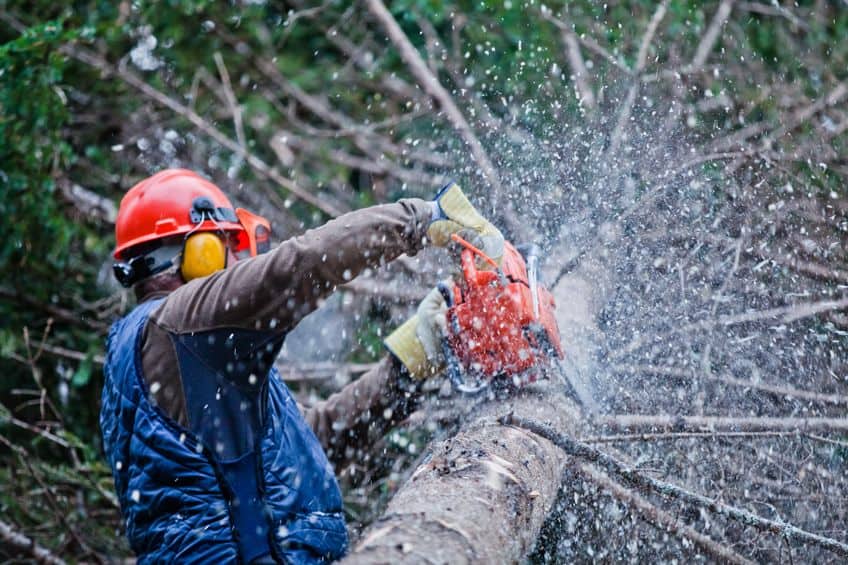
Factors Influencing Tree Removal Costs
One may believe that every tree is the same and removing one should cost about the same as removing any other. This, however, is not the case. Several factors can impact the cost of tree removals, including size, accessibility, required labor and equipment, and the condition of the tree.
We explain this in a little more detail below.
- Size of the Tree: Generally, the larger the tree, the higher the removal cost. Smaller trees (under 30 feet tall) are typically less expensive to remove compared to larger ones (30-80 feet tall).
- Accessibility: Costs can increase if the tree is in a location that’s difficult for professionals to access or if it’s near power lines, buildings, or other structures.
- Tree Condition: The health and stability of the tree can impact removal tactics and costs. Dead, diseased, or unstable trees might require extra caution and equipment.
- Labor and Equipment: The cost is further influenced by the manpower and machinery required, which depends on the complexity of the job.
Average Cost Ranges
Below is a general overview of the average cost ranges for tree removal based on size:
- Small trees (under 30 feet): $150 – $500
- Medium trees (30-60 feet): $450 – $1,000
- Large trees (60-80 feet): $900 – $1,500
- Extra Large trees (over 80 feet): $1,500 – $2,000
Note that these figures can differ based on geographic location, the company you hire, and the tree’s condition.

Cost by Type of Tree
Different tree species have varying structures and wood densities, which can affect the cost.
- Oak Tree: Due to its hard wood, oak trees can be more costly to remove, with prices typically between $200 and $1,000.
- Pine Tree: The cost to remove pine trees ranges from $200 to $1,500, varying by the size and type of pine.
- Palm Tree: Generally, palm tree removal costs fall between $200 and $900, depending on height and trunk diameter.
- Maple, Cedar, Ash, Cypress: These species can vary in cost due to their size and wood hardness. Expect costs similar to oak trees, but always consult with a local professional for more accurate estimates.
Preparation and Safety Measures
Before removing a tree, thorough preparation is essential for a safe and compliant operation. This includes obtaining necessary permits and implementing rigorous safety protocols.
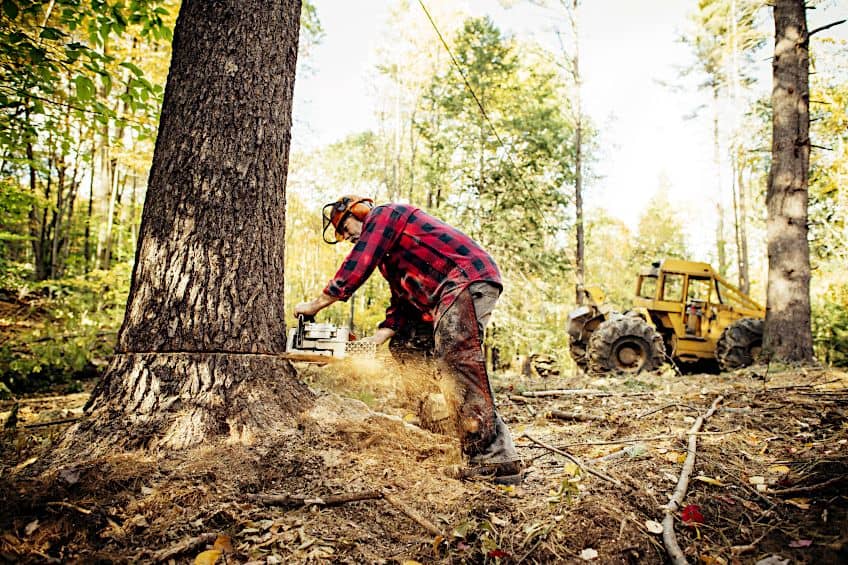
Inspection and Permits
You may believe that because the tree is on your property, you have every right to cut it down yourself. It is important to know, however, that you typically need to get permission to cut down any tree. First, you need to schedule an inspection from a certified arborist. This step will determine the tree’s condition and the best approach for its removal.
It’s important to check with your local city or municipal office for necessary permits—without these, you could face fines or legal issues.
- Initial Inspection: Conducted by a certified arborist to assess tree health and stability.
- Permit Acquisition: Required in many areas and often dependent on the tree’s size, species, and location.
Safety Precautions and Equipment
Safety must never be compromised. You’re advised to wear protective gear and ensure the work zone is secure, which might include traffic control measures if the tree is near a roadway.
Personal Protective Equipment (PPE) should include:
- Helmets
- Eye protection
- Hearing protection
- Gloves
- Safety boots

For larger trees, especially over 30 feet, consider crane rental for safe removal. The use of cranes demands an experienced operator and adherence to strict safety standards to prevent accidents.
- Work Zone Safety: Establish a perimeter and use signage or traffic cones if necessary.
- Crane Rental: Opt for a professional service with certified operators for larger tree removals.
Process and Labor Considerations
When planning for tree removal, you must consider both the process itself and the labor involved. Labor depends on the time and the complexity of the project. For example, if your tree is very large, slightly rotten, or tangled in electricity lines, the price is likely to be significantly increased. These elements directly impact the total cost and time required to complete the project.
As such, it is very important to be aware of them before you start the process of removing your tree.
Labor Costs and Time Estimates
Labor costs for tree removal are typically calculated based on the time it takes to complete the job, which can be influenced by the size and location of the tree.
- Labor Cost: Professional tree services generally charge based on either an hourly rate or a flat fee per project.
- Hourly Rates: Expect to pay around $50 to $100 per hour for each worker.
- Flat Fee: Entire project fees range from $200 to $2,000, largely depending on tree size and complexity.
- Time Estimates:
- Small trees (under 30 feet tall) may take a couple of hours to remove.
- Large trees (30-80 feet tall) can require a full day of work, depending on accessibility and other factors.
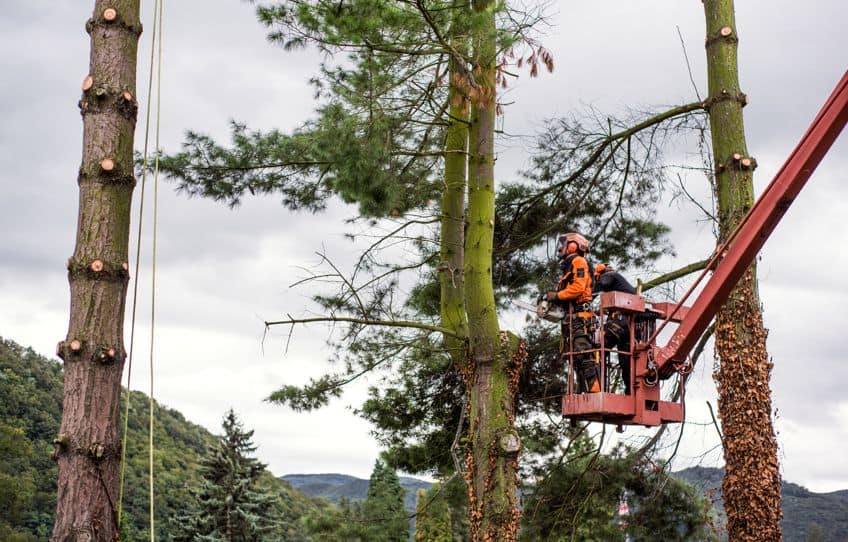
Complexity Factors Affecting Labor
The complexity of tree removal can vary greatly, with several factors increasing the amount of labor needed:
- Tree Location: Accessibility of the tree significantly affects labor. Trees close to buildings or power lines require more careful and thus time-consuming work.
- Additional Equipment: Sometimes crane services or specialized machinery are necessary to remove a tree safely. This will increase your labor costs due to the operation of this equipment.
- Tree Health: Diseased or dead trees can be unpredictable and may necessitate extra caution, while healthy trees are generally easier to manage.
- Tree Pruning: If a tree needs pruning before it can be removed safely, this will also add to the labor and cost.
- Professional Expertise: More complex removals that demand a high level of expertise will cost more due to the proficiency and experience required.
Take note that while higher labor costs may seem daunting, investing in professional tree services ensures your safety and the quality execution of the tree removal process. If you try to remove a tricky tree yourself, you are likely to end up with a tree through your roof or downed electricity lines.
These problems can result in you paying even more in the end.
Additional Services and Charges
When having a tree cut down, it’s important to consider the extra services you might need to return your yard to a tidy state. Here are the key additional services and their potential charges.
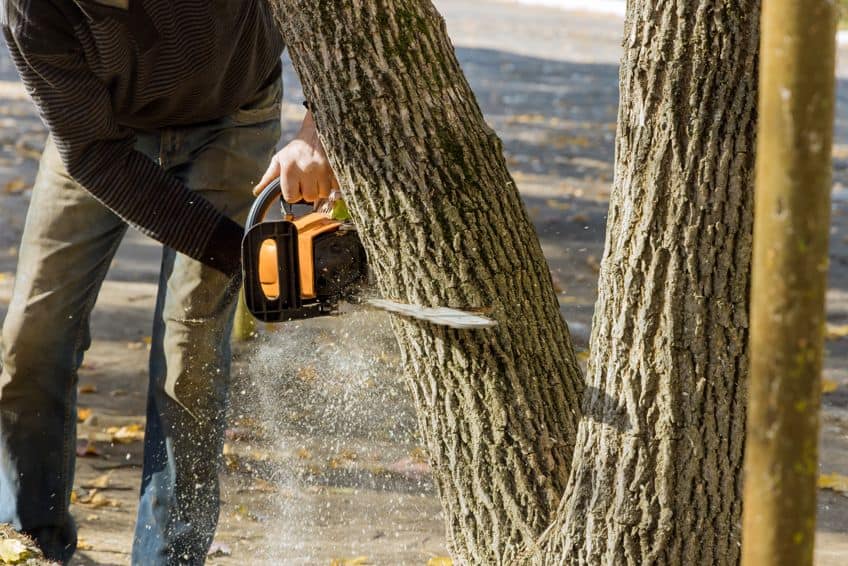
Stump Removal and Grinding
After a tree is cut down, the remaining stump can be an eyesore or a tripping hazard. Stump removal typically involves pulling the stump out from the ground, which can be more labor-intensive and thus, more expensive. The cost can vary greatly based on the stump’s size and the complexity of the root system, averaging between $150 to $500. Stump grinding is often a less expensive alternative, involving a machine that grinds the stump into sawdust.
This service might cost you between $100 to $400, depending on the stump size and the grinding depth required.
Debris and Wood Disposal
Post-cutting, you’ll be left with branches, leaves, and possibly large sections of wood. Debris removal can include anything from simple raking and bagging of leaves to hauling away large limbs. Wood chipping services, where branches and smaller limbs are fed into a chipper, can be quoted around $70 to $150 per hour. For larger projects that include land clearing, note that costs will increase significantly due to the scale of the work. Disposal is usually a part of this service, but check with your provider. Always verify whether these disposal services are included in the initial quote for the tree removal or if they are additional.
Special Circumstances and Emergency Services
When a tree poses an immediate risk due to unforeseen circumstances like extreme weather, or it’s dangerously close to structures or power lines, specialized removal services are necessary. These services typically come at a higher cost due to the urgency and the added risks involved.

Handling Emergency Tree Removal
In an emergency, your need for tree removal becomes a priority. If a tree has fallen or is at imminent risk of falling, it may incur costs ranging from $879 to $6,150, often reflecting an increase compared to standard removal due to the urgency and complexity of the job. For fallen trees, costs can multiply, as emergency services might need to work under challenging conditions to ensure safety and prevent further damage. Leaning or dead trees that threaten to fall demand immediate attention.
The removal of a dead tree, which can be hazardous due to its unpredictability and weakened structure, often involves a meticulous process to avoid endangering lives and property.
Tree Removal Near Structures or Power Lines
Removing trees that are in close proximity to buildings or power lines requires careful planning and often the use of specialized equipment. This is not only for the safety of the workers but also to protect your home and essential services.
- Leaning Trees: If a tree is leaning towards a structure, it presents a clear danger. Removal costs will factor in the complexity of preventing the tree from causing damage as it is taken down.
- Dead Tree Near Structures: Costs might be higher due to the need for precision in felling the tree without impacting buildings.
- Power Lines: Trees that are entangled with power lines pose a significant risk and can disrupt service; removal in these situations must be conducted by trained professionals, and the complexity can bring higher costs.
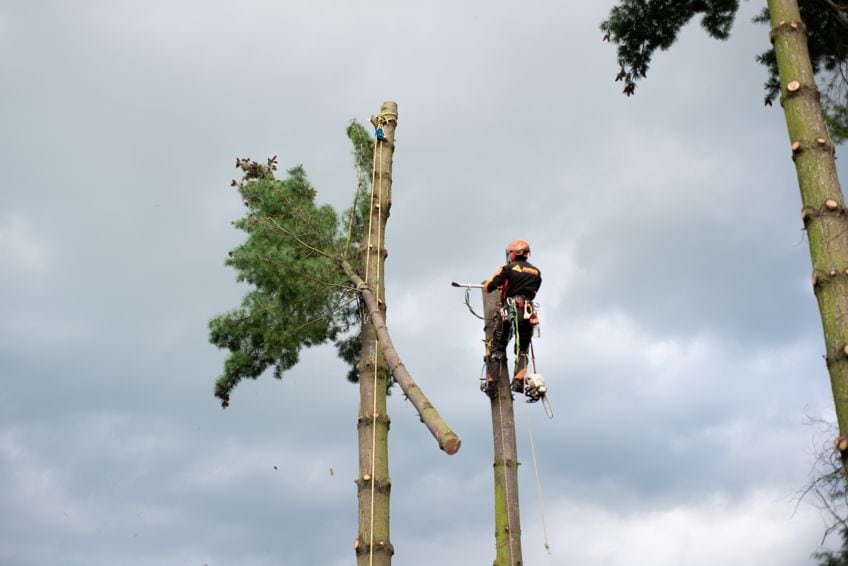
Final Conclusions
Understanding the cost to cut down a tree involves evaluating various factors, from your geographical location to determining when it’s necessary to consult a professional arborist.
The following subsections address commonly asked questions and essential cost considerations.
Costs Across Different Geographies
The cost of tree removal varies significantly depending on your geographic location due to differences in labor costs, the availability of arborists, and local tree density which can affect accessibility. For instance:
- Urban areas often have higher tree removal costs compared to rural areas.
- Northeast US: Average between $200 – $2,000
- Midwest US: Slightly lower averages due to less population density
- West Coast: Expect costs similar to or higher than the Northeast due to the higher cost of living.
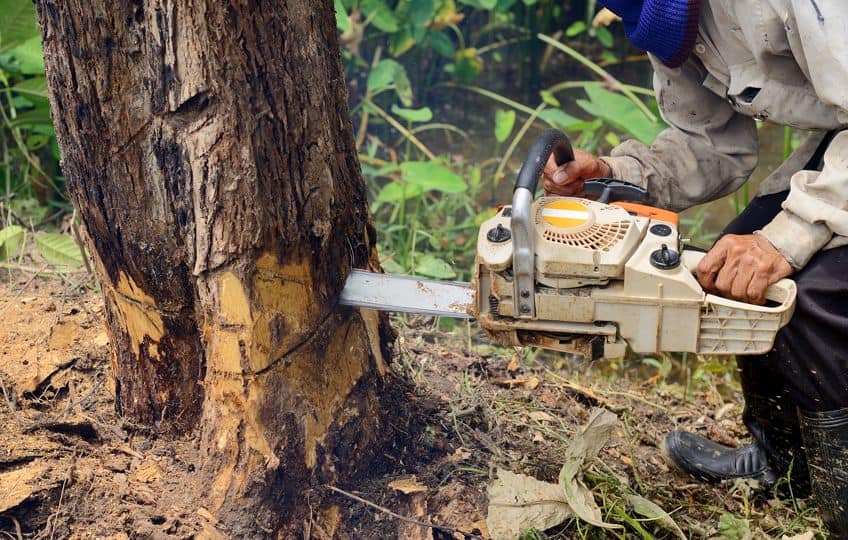
When to Hire a Professional Arborist
Hiring a professional arborist is critical when:
- The tree is large (over 30 feet tall)
- The tree is dead, posing a safety risk
- Specialized equipment is needed for removal
- Local regulations require professional services
Hopefully, this article has given you a greater insight into the process and cost of cutting down trees. It is important to consider the type of tree, the height and location of it, and also the time of year. Peak seasons may attract higher rates due to demand. As for DIY tree removal, it’s ill-advised for large or complex projects due to the high risk involved. Always weigh the risks versus costs when deciding on DIY.

I have been into woodworking since 2005 and woodturning since 2011. Because of my love for wood and woodworking, I started woodhappen.com to teach other enthusiasts about how to finish and seal wood, the best woodworking tools, the different types of wood, and everything else related to woodworking! Read more about me here.

